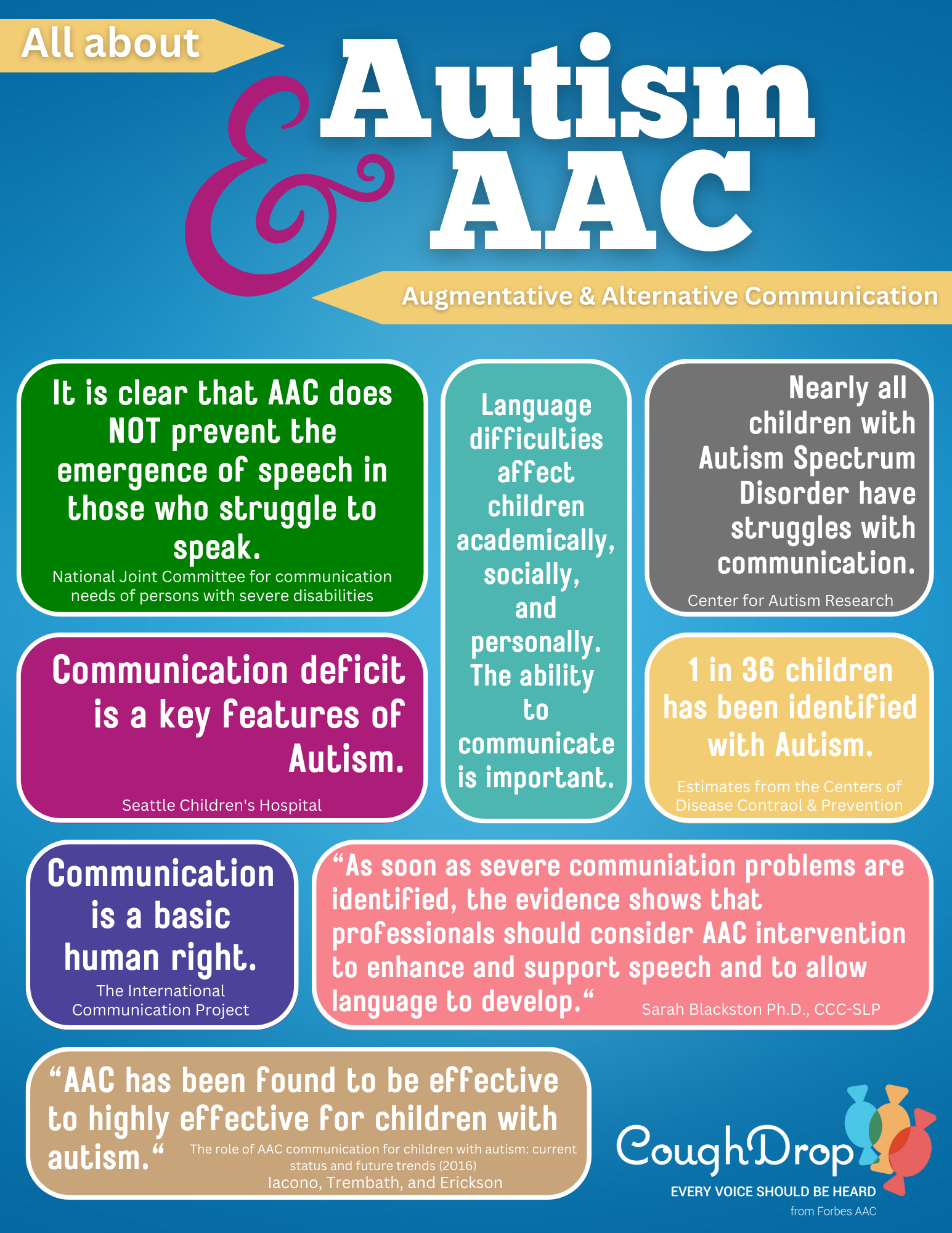April is World Autism Month
Did you know? April is World Autism Month!
Autism is more prevalent than you may think (Centers for Disease Control and Prevention, 2022):
- Approximately 1 in 44 children have been identified as having Autism;
- Autism has a four times higher incidence rate in males than females;
- Autism impacts individuals regardless of ethnicity, race, and socioeconomic status;
- The identified prevalence of Autism in the United States has significantly increased since 2010.
World Autism Month is recognized by the Autism Society as a dedicated time to promote Autism acceptance so that those with Autism have adequate support to be themselves (Autism Society, 2023).
Those who have Autism often experience various communication challenges. Although everyone with Autism is unique and has unique characteristics, there are a few common linguistic and behavioral patterns present in those with Autism (National Institute on Deafness and Other Disorders, 2022). Such patterns include:
- uneven language development - while many individuals with Autism have a degree of speech and language skills, such skills are frequently below “normal” levels and development occurs at a slower rate than “normal”.
- rigid/repetitive language - individuals with Autism often say things that are irrelevant and meaningless to their immediate communication partner. They may repeat statics or words that they heard somewhere else, speak in a robot or sing-song voice, repeat a question that they were just asked, and use scripted phrases in interactions.
- specific interests and exceptional abilities - although they may not be able to hold a conversation with a communication partner about a topic that they are interested in, individuals with Autism can often develop a detailed monologue about the topic. Others may have great musical, mathematical, or memorization abilities.
- underdeveloped nonverbal communication skills - individuals with Autism may be unable to use body language to supplement their communication via words and expression frustration of miscommunication through outbursts. They often avoid eye contact with their communication partners. Many individuals with Autism do not have functional speech and some with Autism exhibit self-injurious behaviors, such as arm biting, skin scratching, and head hitting (Vogindroukas et al., 2022).
Approximately 30% of those with Autism have suboptimal functional speech (Iacono et al., 2016).
Whether or not they have functional speech, individuals with Autism could benefit from using AAC as a communication tool!
- Benefit #1: The AAC device voice output fosters the communicator's language and literacy skill development.
Several studies have found that AAC can not only reduce existing communication and language deficits, but it can also prevent such deficits from developing (Romski & Sevcik, 2005). The voice output paired with the symbolic representation of language fosters the development of expressive and receptive language skills in the communicator via speech and AAC. It also provides support to develop the communicator’s reading and writing skills as they simultaneously hear the word pronunciation while seeing its written form (Mirenda, 2008).
- Benefit #2: Communicating via AAC facilitates neurological connections formation.
AAC systems that have a consistent motor plan make language development accessible to those who cannot produce sounds to form words with their mouth (Mirenda, 2008). Similar to what occurs when learning to use spoken speech, learning to use AAC to communicate facilitates the formation of neurological connections in the communicator to promote communication via AAC with minimal additional cognitive load placed on the communicator.
- Benefit #3: AAC can decrease the communicator’s self-injurious behaviors.
Self-injurious behaviors are often associated with frustration with not being able to communicate as they wish to do so. AAC is a reliable communication method that allows the communicator to communicate anything at any time anywhere and thus, decreasing self-injurious behaviors due to communication breakdown frustration (Ganz, 2015).
Having spoken speech does not always mean it is functional and meets ALL the communication needs of those with Autism. AAC can enhance the lives of those who have Autism in many ways.
As the Communication Bill of Rights declares, “All people with a disability of any extent or severity have a basic right to affect, through communication, the conditions of their existence” (Brady et al., 2016). AAC is just another tool to allow those with Autism to autonomously communicate with any communication partner in any context. Humans are innately multimodal communicators and effective communication is essential to existence.
Join us in supporting Autism acceptance throughout this month!

References
Autism Society. (2023). Autism Acceptance Month. Autism Society. Retrieved March 25, 2023, from https://autismsociety.org/autism-acceptance-month/
Brady, N. C., Bruce, S., Goldman, A., Erickson, K., Mineo, B., Ogletree, B. T., Paul, D., Romski, M. A., Sevcik, R., Siegel, E., Schoonover, J., Snell, M., Sylvester, L., & Wilkinson, K. (2016). Communication Services and Supports for Individuals with Severe Disabilities: Guidance for Assessment and Intervention. American Journal on Intellectual and Developmental Disabilities, 121(2), 121–138. https://doi.org/10.1352/1944-7558-121.2.121
Centers for Disease Control and Prevention. (2022, March 2). Data & Statistics on Autism Spectrum Disorder. Centers for Disease Control and Prevention. Retrieved March 21, 2023, from https://www.cdc.gov/ncbddd/autism/data.html
Ganz, J. B. (2015). AAC Interventions for Individuals with Autism Spectrum Disorders: State of the Science and Future Research Directions. Augmentative and Alternative Communication, 31(3), 203–214. https://doi.org/10.3109/07434618.2015.1047532
Iacono, T., Trembath, D., & Erickson, S. (2016). The role of augmentative and alternative communication for children with autism: current status and future trends. Neuropsychiatric disease and treatment, 12, 2349–2361. https://doi.org/10.2147/NDT.S95967
Mirenda, P. (2008). A Back Door Approach to Autism and AAC. Augmentative and Alternative Communication, 24(3), 220–234. https://doi.org/10.1080/08990220802388263
National Institute of Deafness and Other Communication Disorders. (2020, April 13). Autism Spectrum Disorder: Communication Problems in Children. National Institute of Deafness and Other Communication Disorders. Retrieved March 21, 2023, from https://www.nidcd.nih.gov/health/autism-spectrum-disorder-communication-problems-children
Romski, M., & Sevcik, R. A. (2005). Augmentative Communication and Early Intervention Myths and Realities. Infants & Young Children, 18(3), 174–185. https://doi.org/10.1097/00001163-200507000-00002
Vogindroukas, I., Stankova, M., Chelas, E.-N., & Proedrou, A. (2022). Language and Speech Characteristics in Autism. Neuropsychiatric Disease and Treatment, Volume 18, 2367–2377. https://doi.org/10.2147/ndt.s331987
